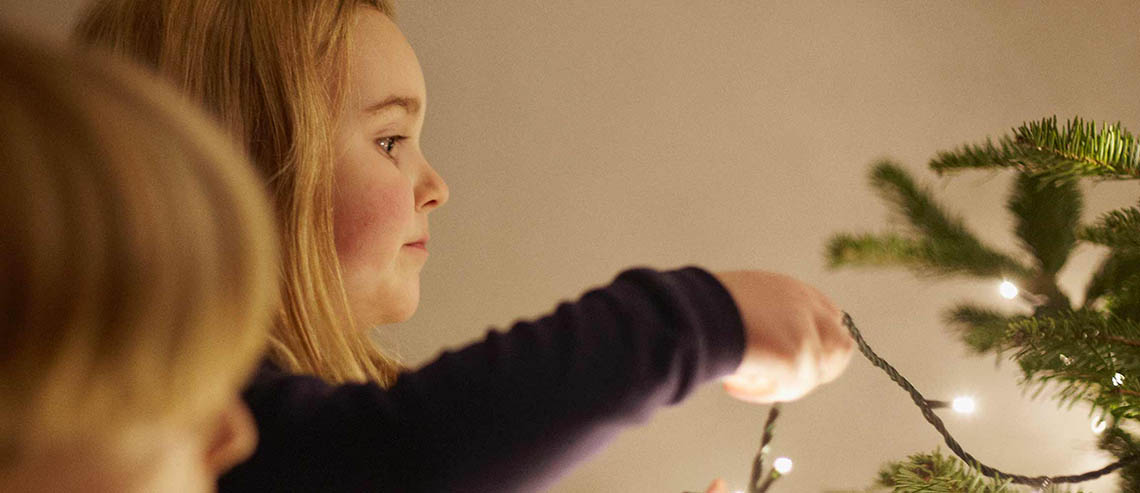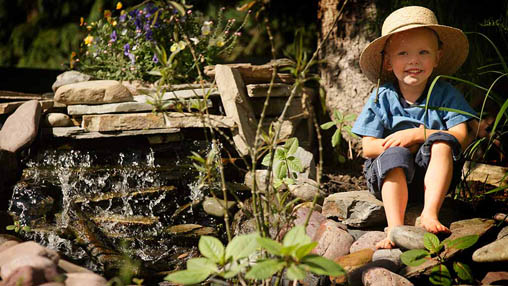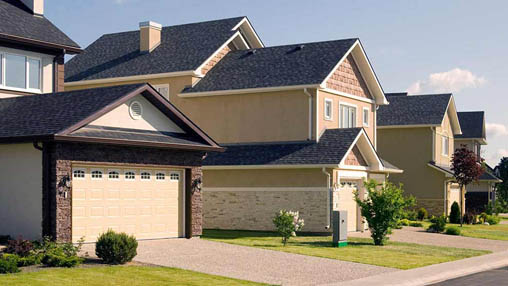
Earn cash back
after close!
With Home Connect, you could earn $350 to $9,500 cash back after close.
Your home is where you rest, recharge and build memories. But it’s not exempt from unexpected hazards. From fire prevention to family safety, this checklist offers practical tips to help protect your home, loved ones and peace of mind.
Home Safety Checklist
Whether you’re settling into a new home or have long put down roots, safeguarding your home—and the people in it— is crucial. These tips can help you prevent problems before they start, avoid costly repairs, and maintain a more secure and protected space.
Fire Safety
Fire poses a serious risk to any home, but many fire hazards are preventable with adequate precautions. From installing smoke alarms to proper appliance care, these steps can help keep your home and family safe.
Install and Check Smoke Detectors
Smoke alarms provide early warning of a fire, giving you more time to react and reduce property damage. The U.S. Fire Administration recommends placing smoke alarms on every level of your home, including:
- In every bedroom
- Outside of every sleeping area
- In the basement
Smoke alarms should be tested at least once a month, and the batteries should be replaced annually or as soon as you hear that alarm “chirp.” If your smoke detector is older, check the manufacturing date—it should be replaced entirely every 10 years.
Have Fire Extinguishers Throughout Your Home
Even with the best precautions in place, fires can still happen. You can stay ready by keeping fire extinguishers on every level of your home, especially in higher-risk areas like the kitchen or garage. Having a fire extinguisher within reach can help you quickly control small fires before they become unmanageable.
But your family’s safety comes first, and a fire extinguisher is never a replacement for professional help. If a fire breaks out, call the fire department immediately—even if you think you can handle it—so help is already on the way if the fire spreads.
Keep Dryer Vents Clean
Neglecting to clean a dryer vent is one of the leading causes of house fires. To reduce the risk, make it a habit to regularly remove lint buildup and ensure the vent is clear and functioning correctly.
Practice Smart Electrical Safety Habits
Help protect your home from electrical fires and hazards by following these safety practices:
- Check electrical cords. Replace any that are frayed or damaged.
- Avoid overloading outlets. Too many devices plugged into a single outlet can cause overheating and potential fires.
- Use extension cords properly. Use extension cords for temporary purposes only and never with major appliances.
- Leave it to the pros. Don’t attempt electrical repairs yourself. Always hire a licensed electrician to ensure safety and code compliance.
- Use surge protectors. Power surges are sudden voltage spikes, often caused by lightning, outages or grid issues, that can damage or destroy electronics. Surge protectors help absorb excess energy and prevent it from reaching your devices, keeping equipment like computers, TVs and appliances safe. For full-home protection, consider having an electrician install a whole-house surge protector at your electrical panel.
- Maintain your HVAC system. Schedule routine maintenance for your HVAC system to catch electrical issues before they become dangerous.
- Get regular inspections. Have a qualified electrician regularly inspect your home’s electrical system to identify and fix potential fire hazards.
Minimize Candle and Fireplace Risks
Candles and fireplaces add warmth and ambiance but pose fire hazards if not used carefully.
- Keep the distance. Place lit candles at least 12 inches away from anything that can burn.
- Maintain fireplaces properly. Keep your chimney clean and free of obstructions. Use a screen to prevent sparks from escaping, and never leave a fire unattended.
Home Security
Your home is your sanctuary, and you should feel safe in it. Strengthening your home’s security helps protect the people and belongings you care about most.
Install a Monitored Security System
A monitored security system connects your home to a professional service that alerts emergency responders the moment an alarm is triggered. Many home security systems offer smartphone alerts that instantly notify you upon alarm activation. These alerts are especially valuable when you're traveling or leaving the house unoccupied.
Protect Your Porch and Home
Install a doorbell camera, which lets you see and speak with visitors, whether you're home or away. This can help deter package theft, monitor suspicious activity and provide added sense of security.
Upgrade to Smart Locks
Smart locks offer keyless entry and let you lock or unlock your doors remotely using your smartphone. They can track who enters your home—for example, you can receive a notification when your kids get home from school. You can also customize access, like giving your neighbor a code to feed your cat while you're on vacation. Added bonus: No need to worry about spare keys.
Secure Valuables in Safes
Store important documents, valuables and firearms in a secure, fireproof safe.
Family Safety
Safeguard the youngest members of your household with these tips for reducing everyday risks and preparing for emergencies.
Anchor Furniture and Appliances
Tip-over accidents can happen when young children bump into or try to climb up on furniture, appliances or televisions. If the item isn’t secured, it can become unstable and fall, posing a serious risk to the child. Help avoid this by securing dressers, bookshelves and televisions to the wall with anchors or special “anti-tip” kits.
Add Window Locks
Window locks enhance security and prevent accidental falls. They're especially important in homes with young children, where even a cracked-open window can pose a hazard. Install childproof window guards or locks on accessible windows and regularly check that all locking mechanisms function correctly.
Remove Sharp Objects and Hazards
Keep sharp tools, knives, scissors and toxic materials such as cleaning supplies or medications out of reach and stored in locked cabinets. Use childproof latches where needed, and store dangerous items in secured drawers to avoid accidental access.
Establish a Family Emergency Plan
Prepare your family for emergencies by creating and practicing a home evacuation plan. Identify at least two exits from each room and agree on a designated outdoor meeting spot. Practice the plan regularly so children know exactly where to go and what to do in case of fire or another emergency.
Carbon Monoxide and Gas Safety
Carbon monoxide (CO) is a colorless, odorless and deadly gas often called the “invisible killer” because it’s undetectable without an alarm. CO poisoning can occur when fuel-burning appliances like furnaces, heaters or generators aren’t adequately serviced or vented. Use these safety measures to reduce your risk of a CO incident:
Install Carbon Monoxide Detectors
The only reliable way to detect carbon monoxide in your home is with a properly functioning CO alarm, as the gas has no smell, color or taste. Place detectors near sleeping areas and on every level of your home, and test them regularly to ensure they’re working.
Schedule Annual Gas Appliance Inspections
Have a professional inspect gas appliances each year to detect leaks, ensure proper ventilation and check for worn or aging parts that may need replacement. Regular maintenance helps prevent carbon monoxide buildup and keeps your systems running safely and efficiently.
Use Generators Safely and Keep Them Outside
Never run a portable generator inside your home, garage, basement, crawlspace, shed or porch. Always operate generators outdoors, at least 20 feet away from your house, with the exhaust pointed away from windows, doors and vents.
When purchasing a generator, it’s best to choose one with built-in CO safety features that automatically shut it off if dangerous levels of carbon monoxide are detected.
Water Damage and Plumbing Safety
Water damage poses significant risks to your home's structural integrity and the health of those who live there. Unchecked moisture can lead to dangerous mold growth, which may cause respiratory issues and allergic reactions. The following preventive measures can help you maintain a safe and healthy living environment.
Check for Leaks
That leaky faucet drip can be more than annoying. It can lead to harmful—and costly-to-repair—water damage and mold. Regularly inspect your home for leaks, paying close attention to areas under sinks, around appliances like dishwashers and washing machines, and near windows or doors.
Maintain Sump Pumps
If your home has a basement or is prone to flooding, ensure your sump pump is in good working order. Test it periodically and consider a backup power source to keep it operational during power outages. A functioning sump pump helps prevent water accumulation and related damage.
Clean Gutters and Downspouts
Keep gutters and downspouts free of debris to allow proper drainage. Clogged gutters can cause water to overflow, leading to roof damage and potential leaks into your home. Regular cleaning ensures rainwater is directed away from your foundation, reducing the risk of water damage.
Reduce Humidity to Prevent Mold
Mold grows quickly in damp, humid conditions, often within 24 to 48 hours of a leak or spill. To prevent it, keep indoor humidity below 60%, ideally between 30 and 50%. To ensure you’re within the ideal range, use a humidity meter to monitor levels. Here are some other moisture-reducing tips:
- Use dehumidifiers or AC when necessary
- Run exhaust fans while cooking or showering
- Fix leaks and dry wet areas quickly
- Insulate cold pipes to prevent condensation
Holiday Safety
During the holidays, your home may be the heart of gatherings, a warm, welcoming place for family and friends to come together. But with extra guests, festive decorations, and a flurry of activity, it’s also a time when a little extra attention to safety can go a long way.
Clear the Clutter
Before setting up decorations, make sure walkways and staircases are clear. Cluttered areas can create trip hazards, especially if you’re hosting lots of guests.
Be Safe With Decorations
Keep holiday trees, candles and lights away from heat sources and exits. Avoid blocking pathways or overloading electrical outlets with festive lights and features.
Be Cautious When Cleaning
Holiday prep often includes deep cleaning, but be cautious—many traditional cleaning products contain harmful chemicals. Use child-safe, non-toxic options to avoid accidental poisoning, especially if you’ll have little ones around.
Cook With Care
The kitchen gets extra busy during the holidays, increasing the chance of burns or foodborne illness. Wash hands and surfaces often, cook food to safe temperatures and never leave stovetops or ovens unattended.
Use a Home Equity Loan to Support Home Safety Improvements
Whether you're upgrading your electrical system, installing smart security features or making essential repairs to prevent hazards, a home equity loan can help you cover the cost. Connect with a Pennymac Loan Expert today to see how tapping into your home’s equity could support your safety upgrades and help you create a more secure living environment.
Share
Categories





